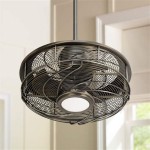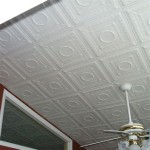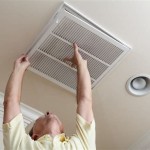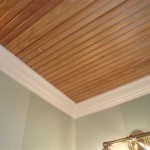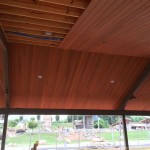What Is The Best Ceiling Fan? A Comprehensive Guide to Selection
Selecting the best ceiling fan involves more than simply choosing a stylish design. Performance, energy efficiency, room size, and overall aesthetics all play crucial roles in determining the optimal fan for a given space. This article explores the key factors to consider when evaluating ceiling fans, providing a framework for making an informed decision that balances comfort, cost-effectiveness, and visual appeal.
Assessing Room Size and Fan Blade Span
The first step in selecting a ceiling fan is to determine the appropriate size for the room. The primary factor here is the blade span, which is the diameter of the circle the fan blades create when rotating. A fan that is too small will not circulate air effectively, while a fan that is too large can create excessive airflow and noise.
For rooms up to 75 square feet, a fan with a blade span of 36 inches or less is generally sufficient. Rooms ranging from 76 to 144 square feet typically benefit from a 42-inch fan. For spaces between 144 and 225 square feet, a 52-inch fan is recommended. Larger rooms, exceeding 225 square feet, may require a 60-inch fan or even multiple fans to ensure adequate air circulation. These are general guidelines, and other factors, such as ceiling height and room layout, can influence the optimal fan size.
It is important to note that these measurements are based on standard ceiling heights of around 8 to 9 feet. In rooms with higher ceilings, it may be necessary to use a downrod to lower the fan closer to the floor, improving its effectiveness. A downrod is a metal extension rod that suspends the fan from the ceiling. The appropriate length of the downrod depends on the ceiling height; generally, the blades should be between 8 and 9 feet from the floor.
Consider also the shape of the room. Long, narrow rooms may benefit from multiple smaller fans strategically placed to provide consistent airflow throughout the space. Irregularly shaped rooms may require careful consideration of fan placement to avoid creating dead zones or areas with excessive airflow.
Understanding Motor Types and Energy Efficiency
The motor is the heart of a ceiling fan, and its type significantly impacts the fan's performance, energy consumption, and lifespan. There are primarily two types of ceiling fan motors: AC (alternating current) and DC (direct current).
AC motors are the traditional and generally less expensive option. They are reliable and readily available, but they tend to be less energy-efficient than DC motors. AC motors typically have fewer speed settings, often just three, and they may produce more noise than DC motors. The energy efficiency of an AC motor is measured by its CFM (cubic feet per minute) per watt, which indicates the amount of airflow generated per unit of energy consumed. A higher CFM/watt rating signifies greater energy efficiency.
DC motors, on the other hand, are more energy-efficient, quieter, and offer a wider range of speed settings. They consume significantly less power than AC motors, resulting in lower energy bills. DC motors also tend to have a longer lifespan due to their more efficient operation and reduced heat generation. While DC motors are typically more expensive upfront, the long-term energy savings can often offset the initial cost. Furthermore, DC motors often offer features such as reverse function, which can be useful for circulating warm air in the winter.
When evaluating energy efficiency, look for the Energy Star label. Energy Star-certified ceiling fans meet strict energy efficiency guidelines set by the Environmental Protection Agency (EPA). These fans use approximately 20% less energy than standard ceiling fans.
Consider the long-term operating costs when choosing between AC and DC motors. While the initial cost is a factor, the energy savings offered by a DC motor can make it a more cost-effective choice over the lifespan of the fan.
Evaluating Features and Functionality
Beyond size and motor type, several features and functionalities can enhance the performance and usability of a ceiling fan. These include blade pitch, remote control operation, integrated lighting, and smart home integration.
Blade pitch refers to the angle of the fan blades. A steeper blade pitch generally moves more air, but it can also require more power. A blade pitch between 12 and 15 degrees is generally considered optimal for most residential applications. Lower blade pitches may be suitable for smaller rooms or for individuals who prefer a gentle breeze.
Remote control operation offers convenience and allows for easy adjustment of the fan speed and light intensity without the need to reach for a pull chain. Some remote controls also include timers and other advanced features. Consider the ease of use and the range of features offered by the remote control when making a selection.
Integrated lighting is a common feature in ceiling fans, providing both illumination and air circulation. The type of lighting can vary, ranging from incandescent bulbs to LED lights. LED lights are the most energy-efficient option, offering long lifespan and low energy consumption. Consider the light output (measured in lumens) and the color temperature (measured in Kelvin) when evaluating integrated lighting. A lower Kelvin rating produces a warmer, more yellowish light, while a higher Kelvin rating produces a cooler, more bluish light.
Smart home integration allows for controlling the fan through a smartphone app or voice commands. This feature can be particularly useful for automating fan operation based on temperature, time of day, or other factors. Smart fans can often be integrated with other smart home devices, such as thermostats and lighting systems.
The reverse function, also known as winter mode, allows the fan to rotate clockwise, gently circulating warm air that rises to the ceiling back down into the room. This can help to reduce heating costs and improve overall comfort during the colder months.
Finally, consider the aesthetic design of the fan. Choose a style that complements the décor of the room and reflects personal preferences. Ceiling fans are available in a wide range of styles, from traditional to contemporary, and in various finishes, such as brushed nickel, bronze, and white.
When installing the ceiling fan, ensure it is securely mounted to a structural support in the ceiling. It is highly recommended to consult with a qualified electrician, especially if wiring is involved.
Regular maintenance, such as cleaning the blades and tightening any loose screws, will help to ensure the longevity and optimal performance of the ceiling fan.

16 Best Ceiling Fans For Extra Airflow In 2024

Ceiling Fan Guide The Home Depot

Best Ceiling Fans For Your Space Temecula Handyman

Find The Best Ceiling Fan For Your Home Destination Lighting Flip Switch

6 Best Ceiling Fans Of 2024 Reviewed

Discover The Best Ceiling Fan Brands Quality Choices To Keep You Cool Delmarfans Com
The 9 Best Ceiling Fans Of 2024 To Cool Every Room In Your Home

Ceiling Fan Guide The Home Depot

Ceiling Fans How To Choose The Best One For Your Room Building And Interiors

What Are The Best Ceiling Fans For Your Home Ultimate Guide
Related Posts


